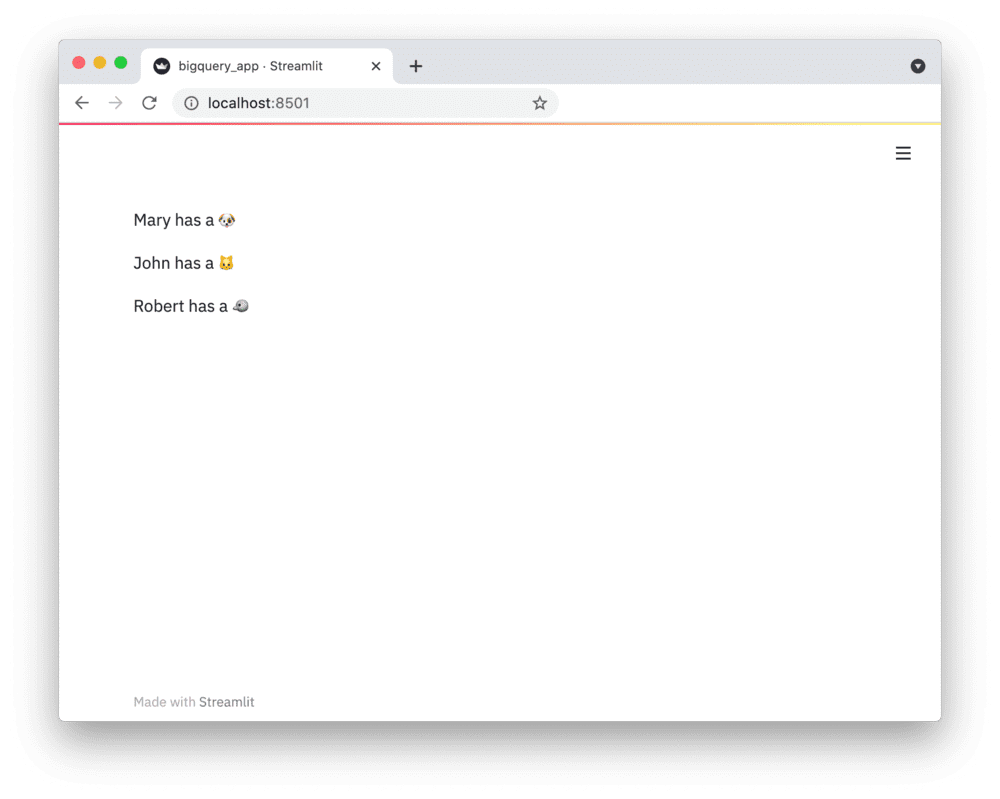Connect Streamlit to a private Google Sheet
Introduction
This guide explains how to securely access a private Google Sheet from Streamlit Cloud. It uses the gsheetsdb library and Streamlit's secrets management.
If you are fine with enabling link sharing for your Google Sheet (i.e. everyone with the link can view it), the guide Connect Streamlit to a public Google Sheet shows a simpler method of doing this. If your Sheet contains sensitive information and you cannot enable link sharing, keep on reading.
Create a Google Sheet
Note
If you already have a database that you want to use, feel free to skip to the next step.

Enable the Sheets API
Programmatic access to Google Sheets is controlled through Google Cloud Platform. Create an account or sign in and head over to the APIs & Services dashboard (select or create a project if asked). As shown below, search for the Sheets API and enable it:

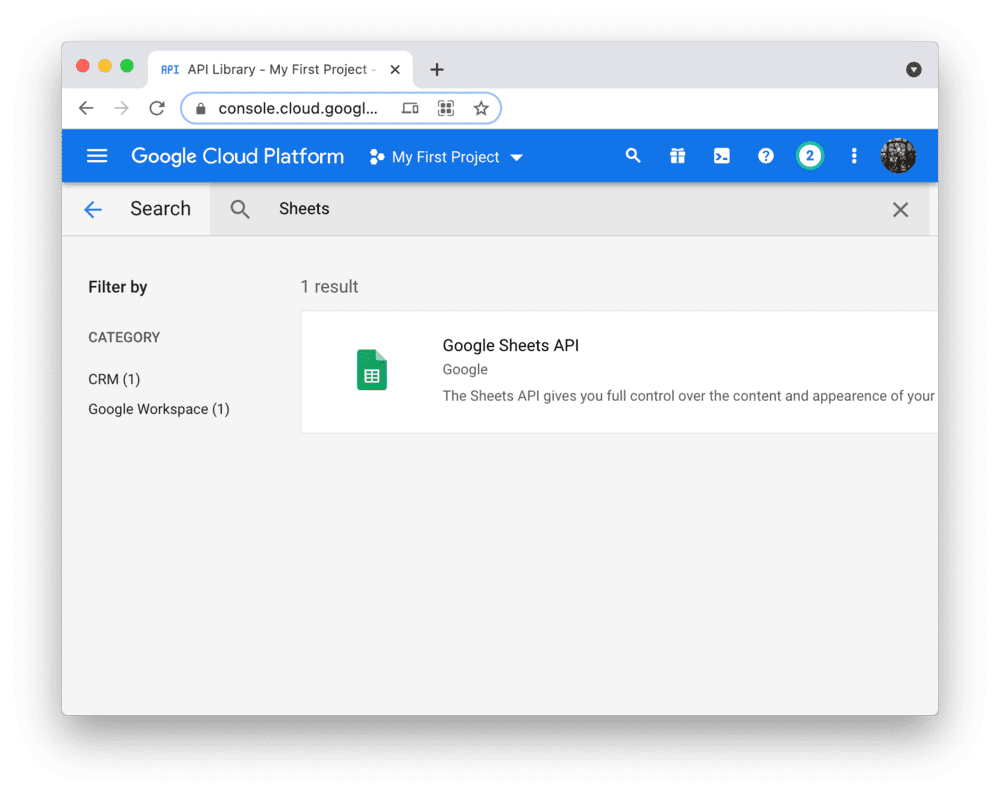
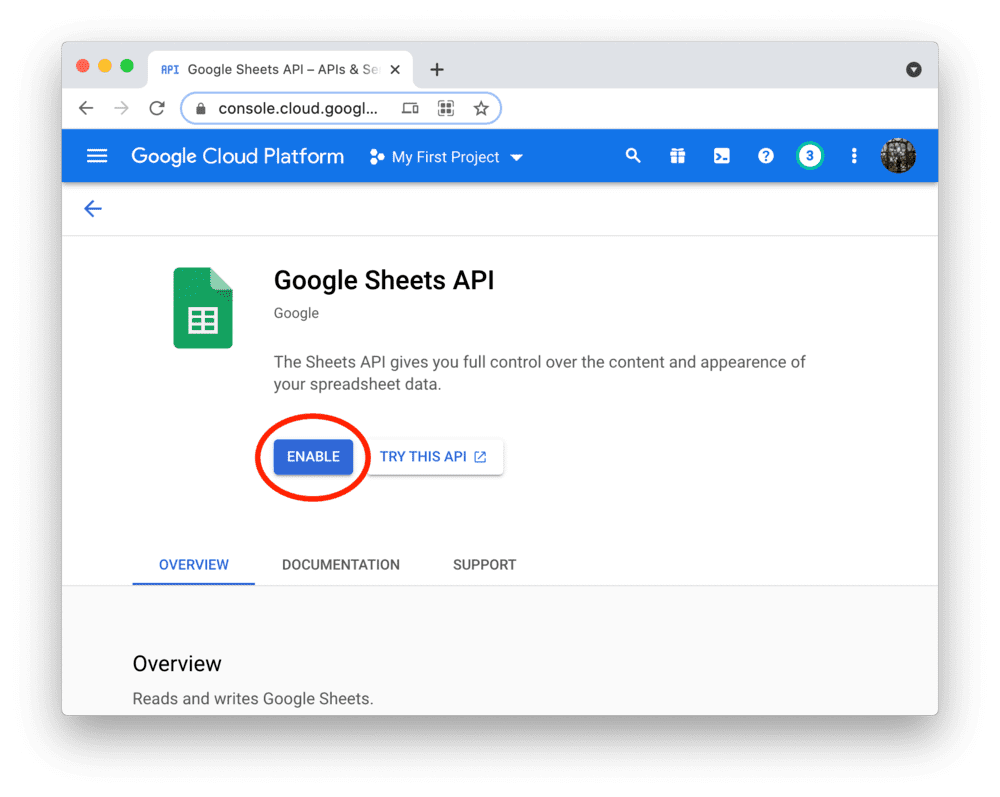
Create a service account & key file
To use the Sheets API from Streamlit Cloud, you need a Google Cloud Platform service account (a special account type for programmatic data access). Go to the Service Accounts page and create an account with the Viewer permission (this will let the account access data but not change it):
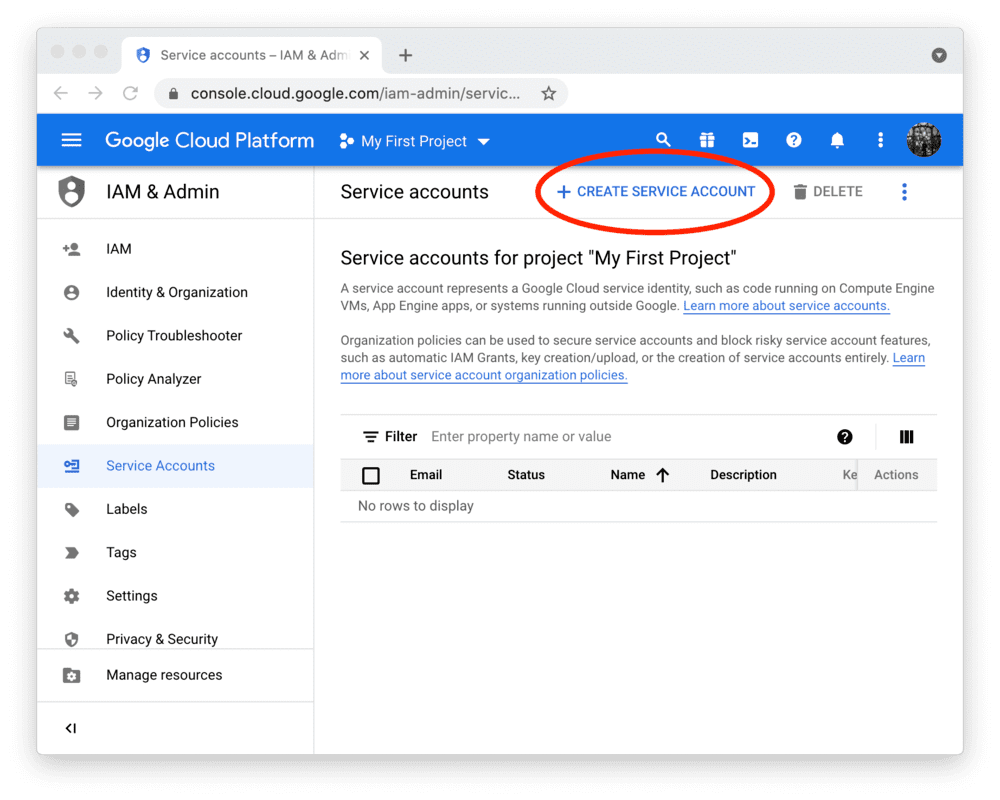

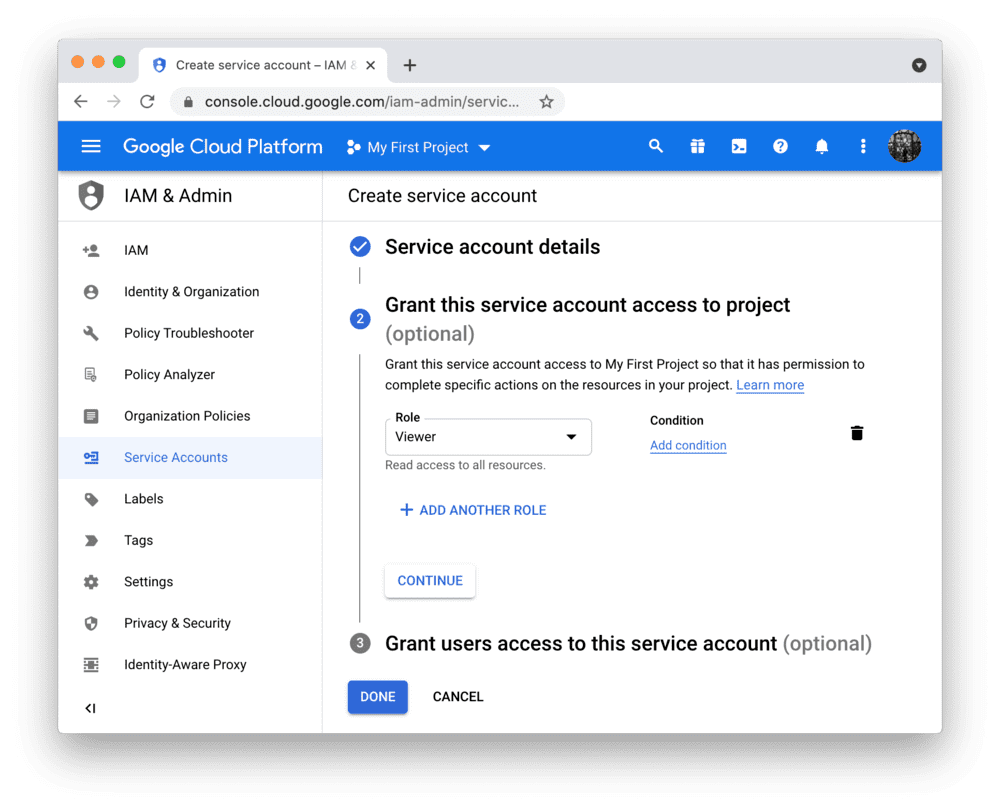
Note
The button CREATE SERVICE ACCOUNT is gray, you don't have the correct permissions. Ask the admin of your Google Cloud project for help.
After clicking DONE, you should be back on the service accounts overview. First, note down the email address of the account you just created (important for next step!). Then, create a JSON key file for the new account and download it:
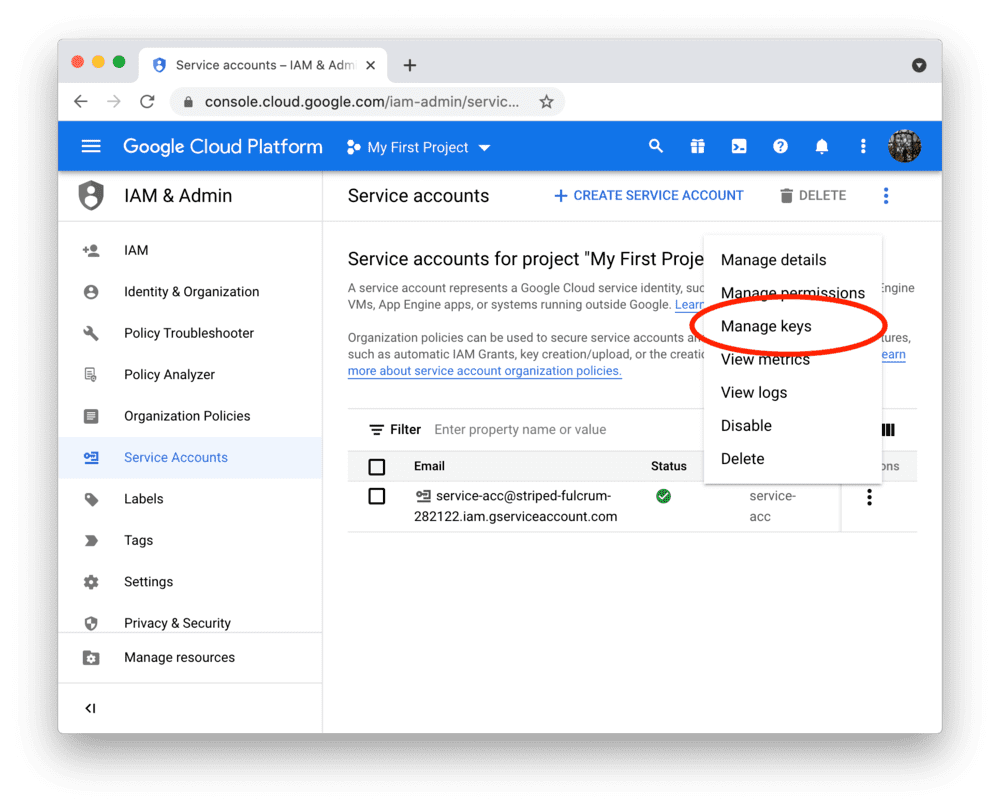
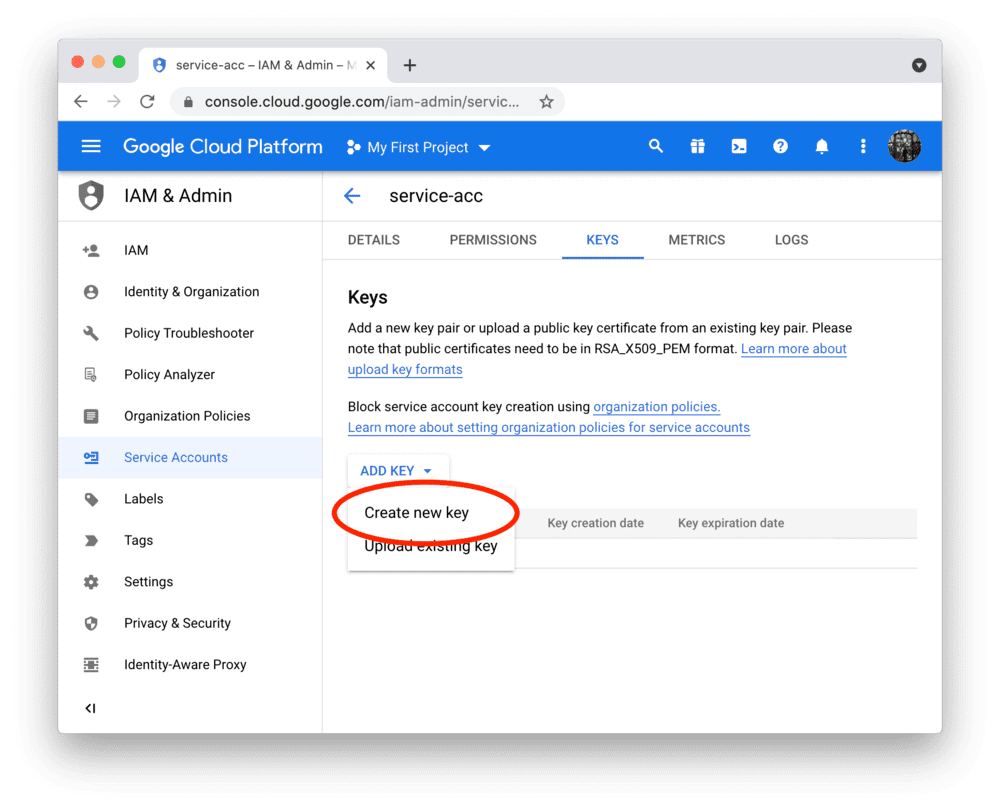

Share the Google Sheet with the service account
By default, the service account you just created cannot access your Google Sheet. To give it access, click on the Share button in the Google Sheet, add the email of the service account (noted down in step 2), and choose the correct permission (if you just want to read the data, Viewer is enough):


Add the key file to your local app secrets
Your local Streamlit app will read secrets from a file .streamlit/secrets.toml in your app's root directory. Create this file if it doesn't exist yet and add the URL of your Google Sheet plus the content of the key file you downloaded to it as shown below:
# .streamlit/secrets.toml
private_gsheets_url = "https://docs.google.com/spreadsheets/d/12345/edit?usp=sharing"
[gcp_service_account]
type = "service_account"
project_id = "xxx"
private_key_id = "xxx"
private_key = "xxx"
client_email = "xxx"
client_id = "xxx"
auth_uri = "https://accounts.google.com/o/oauth2/auth"
token_uri = "https://oauth2.googleapis.com/token"
auth_provider_x509_cert_url = "https://www.googleapis.com/oauth2/v1/certs"
client_x509_cert_url = "xxx"
Important
Add this file to .gitignore and don't commit it to your Github repo!
Copy your app secrets to the cloud
As the secrets.toml file above is not committed to Github, you need to pass its content to your deployed app (on Streamlit Cloud) separately. Go to the app dashboard and in the app's dropdown menu, click on Edit Secrets. Copy the content of secrets.toml into the text area. More information is available at Secrets Management.
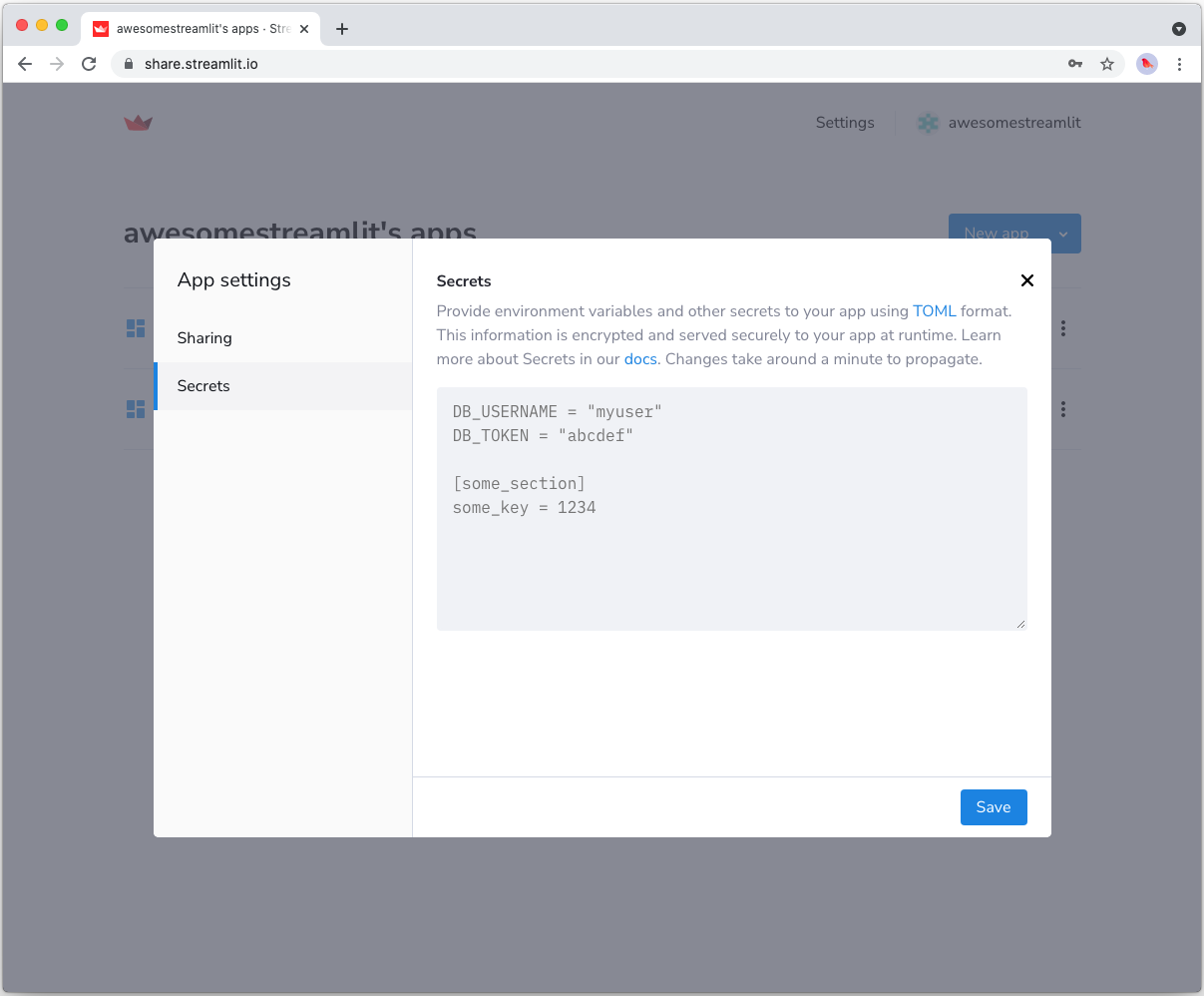
Add gsheetsdb to your requirements file
Add the gsheetsdb package to your requirements.txt file, preferably pinning its version (replace x.x.x with the version you want installed):
# requirements.txt
gsheetsdb==x.x.x
Write your Streamlit app
Copy the code below to your Streamlit app and run it.
# streamlit_app.py
import streamlit as st
from google.oauth2 import service_account
from gsheetsdb import connect
# Create a connection object.
credentials = service_account.Credentials.from_service_account_info(
st.secrets["gcp_service_account"],
scopes=[
"https://www.googleapis.com/auth/spreadsheets",
],
)
conn = connect(credentials=credentials)
# Perform SQL query on the Google Sheet.
# Uses st.cache to only rerun when the query changes or after 10 min.
@st.cache(ttl=600)
def run_query(query):
rows = conn.execute(query, headers=1)
return rows
sheet_url = st.secrets["private_gsheets_url"]
rows = run_query(f'SELECT * FROM "{sheet_url}"')
# Print results.
for row in rows:
st.write(f"{row.name} has a :{row.pet}:")
See st.cache above? Without it, Streamlit would run the query every time the app reruns (e.g. on a widget interaction). With st.cache, it only runs when the query changes or after 10 minutes (that's what ttl is for). Watch out: If your database updates more frequently, you should adapt ttl or remove caching so viewers always see the latest data. Read more about caching here.
If everything worked out (and you used the example table we created above), your app should look like this:
